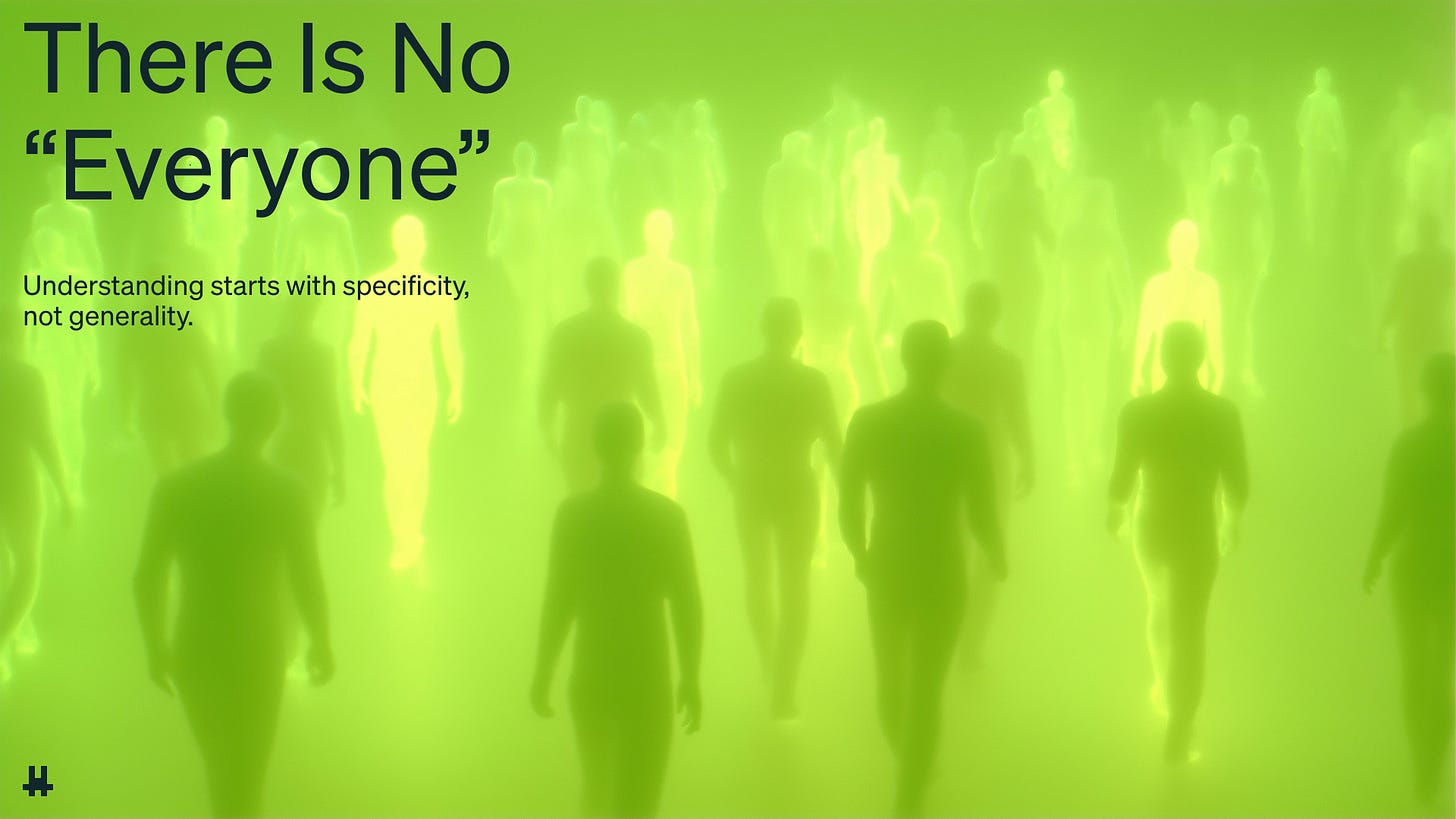One of the most common mistakes I see founders make, especially in the early days, is believing their product is “for everyone.”
It’s not.
It never is.
This is a fallacy.
The idea of a mass market is a myth. An illusion rooted in the desire for scale without sacrifice.
It’s lazy. It’s dangerous. And it’s a fast track to brand death.
In reality, there is no undifferentiated “audience”…only people. People with their own needs, preferences, contradictions, and desires.
People who make decisions emotionally, then rationalize them later. People who are drawn to things that feel made just for them.
These people don’t form a “mass”, they form microcultures. Tiny constellations of shared language, aesthetics, values, and rituals. What some call "niche" is often just "focused."
Even the smallest, weirdest, most obscure subreddits have thousands of deeply engaged members. The internet has proven, repeatedly, that the long tail is real.
Your problem isn’t that your audience is too narrow.
Your problem is you don’t know who they are.
Worse, many founders invent imaginary users. Hypothetical, fantastical composites of what they wish the world wanted. Then they build for that fiction.
It’s like writing a love letter to someone who doesn’t exist.
If your organization ever gets big enough to segment audiences, build personas, and tailor messaging to different segments, congratulations…that’s a high-quality problem. But most never get there. Because they never truly understood their first user.
And understanding doesn’t come from abstraction. It comes from proximity.
You have to talk to people. Constantly. Obsessively. Ask better questions. What do they care about? What do they hate? What makes them feel seen? What keeps them up at night?
Because when you build something that makes someone feel like it was designed for them, that’s when they start to care. As Jonah Berger writes in Contagious, the key isn’t broad appeal, it’s insider resonance.
“We need to find our inner remarkability and make people feel like insiders.”
Remarkability isn’t a branding trick. It’s a function of precision. Of showing your audience that you get them, and not in a broad, vague, “target demo” way, but in a soul-level way. You know their quirks. You know their language. You build for them so specifically that the product becomes a signal.
A symbol. A secret handshake.
And when one person feels truly seen, others like them will follow.
That’s how things spread.
Not by diluting your message to please the crowd, but by deepening it to galvanize your tribe.
As Seth Godin reminds us in Tribes (required reading!):
“Great leaders don’t water down their message in order to make the tribe a bit bigger. Instead, they realize that a motivated, connected tribe in the midst of a movement is far more powerful than a larger group could ever be.”
So if it’s not clicking yet, don’t broaden. Sharpen. Don’t generalize, listen.
This is not about reach.
This is about resonance.
Reach comes as a byproduct.
That’s the work.
That’s the mission.





